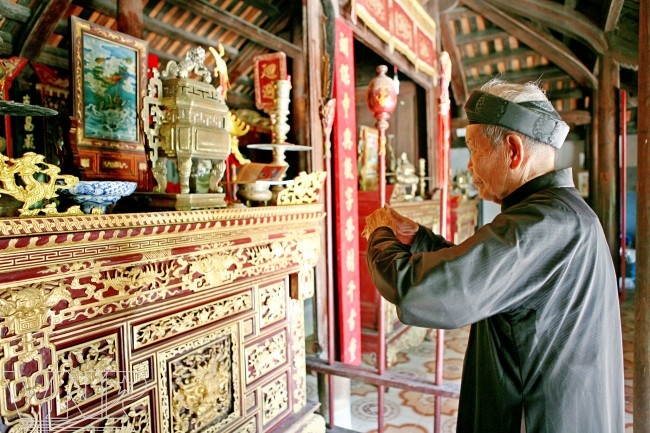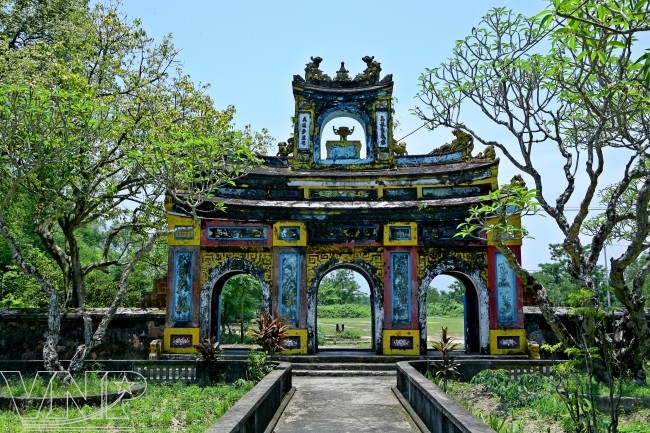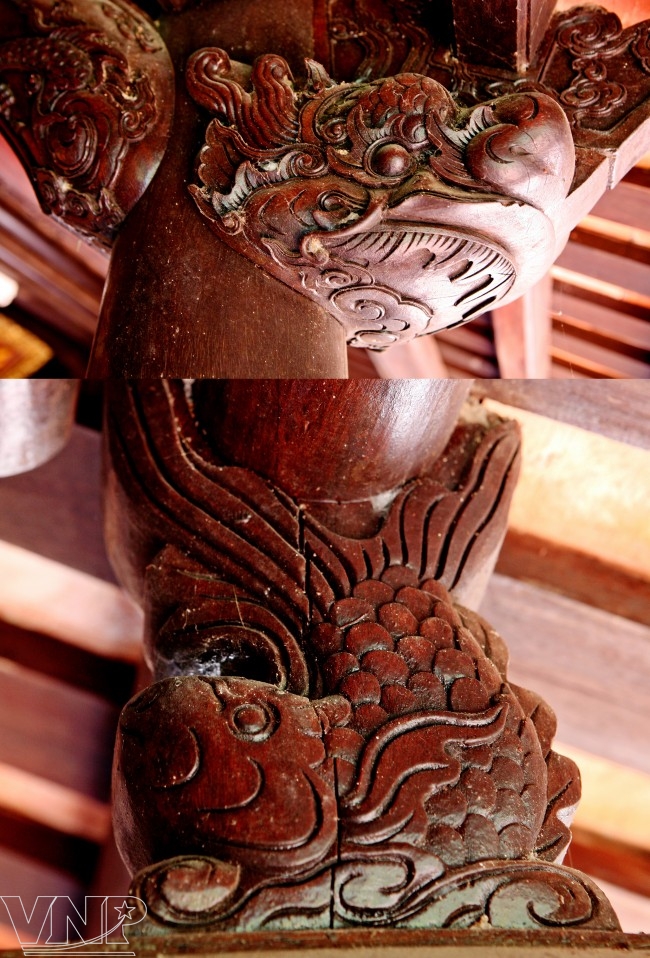Discovering Thu Le ancient village
VGP – The ancient village of Thu Le is located in Quang Phuoc Commune, Quang Dien District. For over half a century, the village has preserved many cultural features of a village in the old capital of Hue.
 |
|
Offering incense at a family’s worshipping house in Thu Le Village – Photo: VNP |
Thu Le is an agricultural village but it is famous for such cultural works as pagodas and communal houses. It is also famous for Ngu Hanh Temple built to worship Princess Huyen Tran during the Tran Dynasty (1225-1400) who followed her husband to reclaim new lands in the South. There is also Van Thanh Temple to worship Khong Tu and Vo Thanh Temple to worship Quangong.
 |
|
Three-door temple gate of Thu Le village – Photo: VNP |
According to the village’s custom, each large family together with the authorities and villagers, take responsibility for organizing worshipping rites during the year.
Along the village’s main road, many family worshipping houses are scattered. Each is not only a beautiful architectural work but they also preserve the cultural and historical imprints of a family.
 |
|
Village temple of Thu Le village – Photo: VNP |
 |
|
Skillful Wood-engraving technique in Thu Le village – Photo: VNP |
Annually on January 6 of the lunar calendar, the villagers in Thu Le organize their wrestling festival in the yard of the communal house that attracts a large number of visitors. The wrestling festivals in Thu Le and Sinh villages are considered the most ancient and famous in Hue in particular and the Central region in general. On the 7th, when the wrestling festival ends, the villagers flock to participate in a boat-racing festival. During the first two days of the New Year, the area seems to be overwhelmed by the festive atmosphere that shows the optimism and sporting spirit of the villagers.

